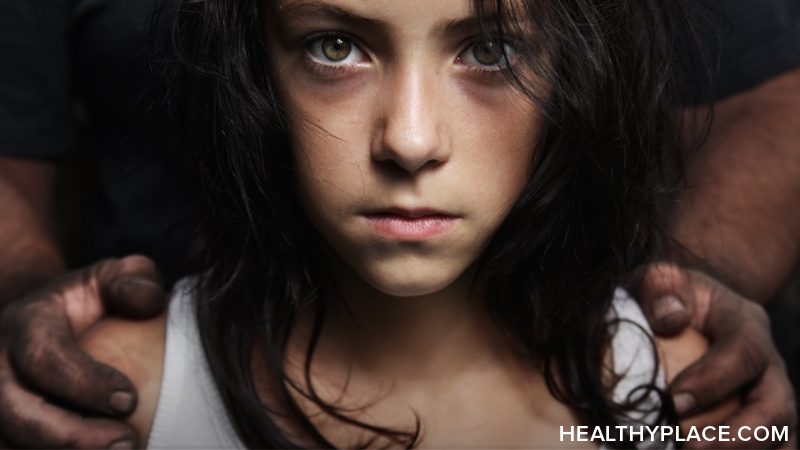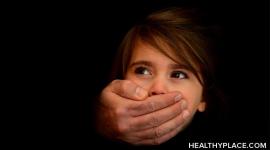What Is Child Sexual Abuse?

While decades ago child sexual abuse was rarely recognized, we now realize as a society that sexual abuse is a huge problem affecting our population. It is estimated that up to one-in-three females and one-in-six men were sexually abused in childhood. Professionals' estimates vary widely, however, as it's believed that childhood sexual abuse is dramatically underreported with most not admitting to child sexual abuse until adulthood.
Definition of Sexual Abuse
In its simplest form, child sexual abuse is any sexual encounter that occurs between a child and an older person (as children cannot legally consent to sexual acts). This abuse may involve contact, like touching or penetration. It also includes non-contact cases, like "flashing" or child pornography.
However, in practice, there are actually two working definitions of child sexual abuse. One definition of childhood sexual abuse is used by legal professionals while the other is used by clinical professionals, like therapists.
In the realm of legal definitions, both civil (child protection) and criminal definitions exist for child sexual abuse. Federally, the definition of child sexual abuse is contained within the Child Abuse Prevention and Treatment Act. Sexual abuse is defined to include:1
- "(A) the employment, use, persuasion, inducement, enticement, or coercion of any child to engage in, or assist any other person to engage in, any sexually explicit conduct or simulation of such conduct for the purpose of producing a visual depiction of such conduct; or
- (B) the rape, molestation, prostitution, or other forms of sexual exploitation of children, or incest with children;..."
The age under which one is considered a child varies by state and sometimes an age differential between the perpetrator and the victim is required.
Clinical Definition of Child Sexual Abuse
Clinicians, like psychiatrists and psychologists, though judge childhood sexual abuse more on the effect it has on the child and less on a cut-and-dried definition. The traumatic impact is generally what clinicians look for in cases of sexual abuse. (Read about: Effects of Child Sexual Abuse on Children)
A clinician often considers the following factors when differentiating abusive from non-abusive acts:
- Power differential – wherein the abuser has power over the abused. This power may be physical or psychological in nature.
- Knowledge differential – wherein the abuser has a more sophisticated understanding of the situation than the abused. This may be due to an age difference or cognitive/emotional differences.
- Gratification differential – wherein the abuser seeks gratification for themselves and not the abused.
Circumstances of Childhood Sexual Abuse
In most cases, the abused child knows their abuser and the abuser is someone who has access to the child - such as a family member, teacher or babysitter. Only one-in-ten cases of sexual abuse involve a stranger. Childhood sexual abusers are normally men, whether or not the victim is a female.2
Children may be abused in a variety of situations including:
- A two-person (dyadic) relationship involving one abuser and one victim
- Group sex – may involve one or more abusers and one or more victims
- Sex rings
- Child pornography
- Prostitution
- Abuse as part of a ritual
APA Reference
Tracy, N.
(2021, December 17). What Is Child Sexual Abuse?, HealthyPlace. Retrieved
on 2026, January 3 from https://www.healthyplace.com/abuse/child-sexual-abuse/what-is-child-sexual-abuse


